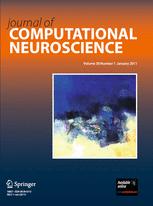Statistical properties of superimposed stationary spike trains
Abstract
The Poisson process is an often employed model for the activity of neuronal populations. It is known, though, that superpositions of realistic, non- Poisson spike trains are not in general Poisson processes, not even for large numbers of superimposed processes. Here we construct superimposed spike trains from intracellular in vivo recordings from rat neocortex neurons and compare their statistics to specific point process models. The constructed superimposed spike trains reveal strong deviations from the Poisson model. We find that superpositions of model spike trains that take the effective refractoriness of the neurons into account yield a much better description. A minimal model of this kind is the Poisson process with dead-time (PPD). For this process, and for superpositions thereof, we obtain analytical expressions for some second-order statistical quantities—like the count variability, inter-spike interval (ISI) variability and ISI correlations—and demonstrate the match with the in vivo data. We conclude that effective refractoriness is the key property that shapes the statistical properties of the superposition spike trains. We present new, efficient algorithms to generate superpositions of PPDs and of gamma processes that can be used to provide more realistic background input in simulations of networks of spiking neurons. Using these generators, we show in simulations that neurons which receive superimposed spike trains as input are highly sensitive for the statistical effects induced by neuronal refractoriness.





